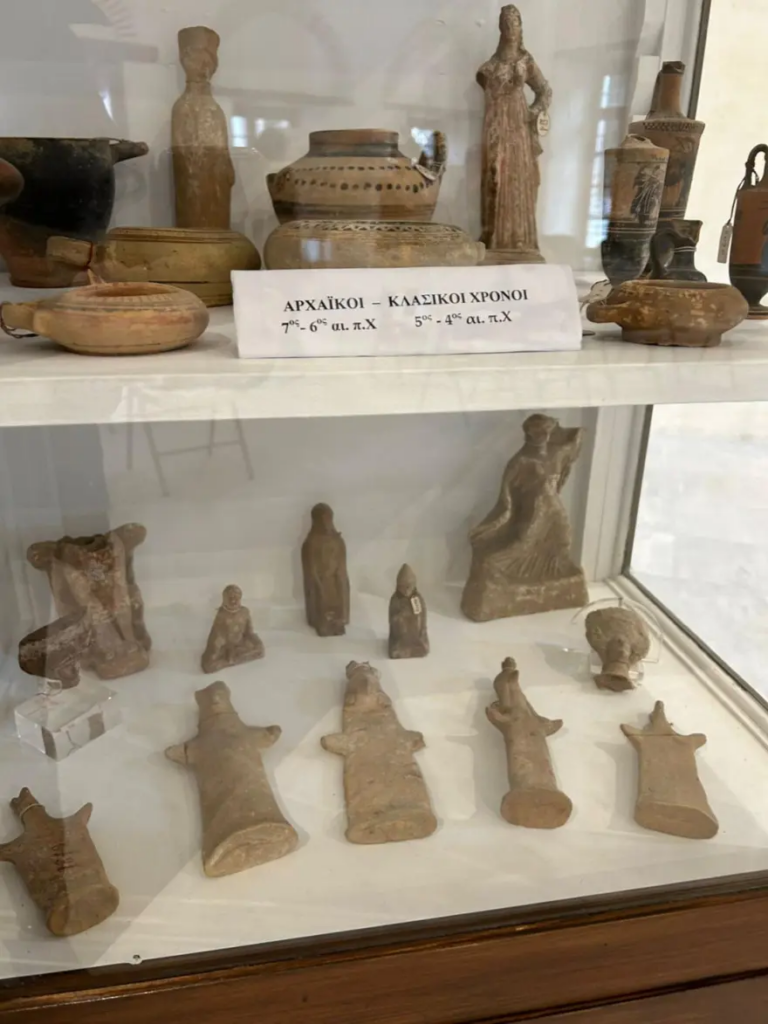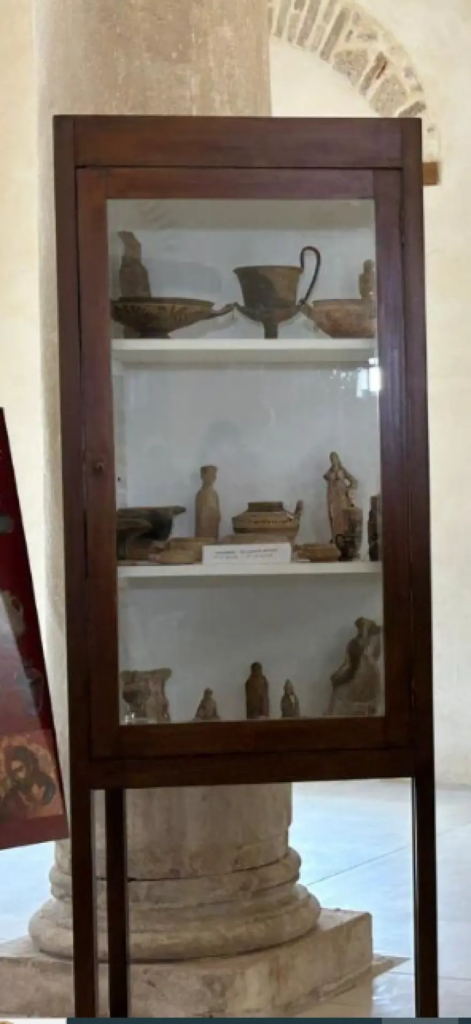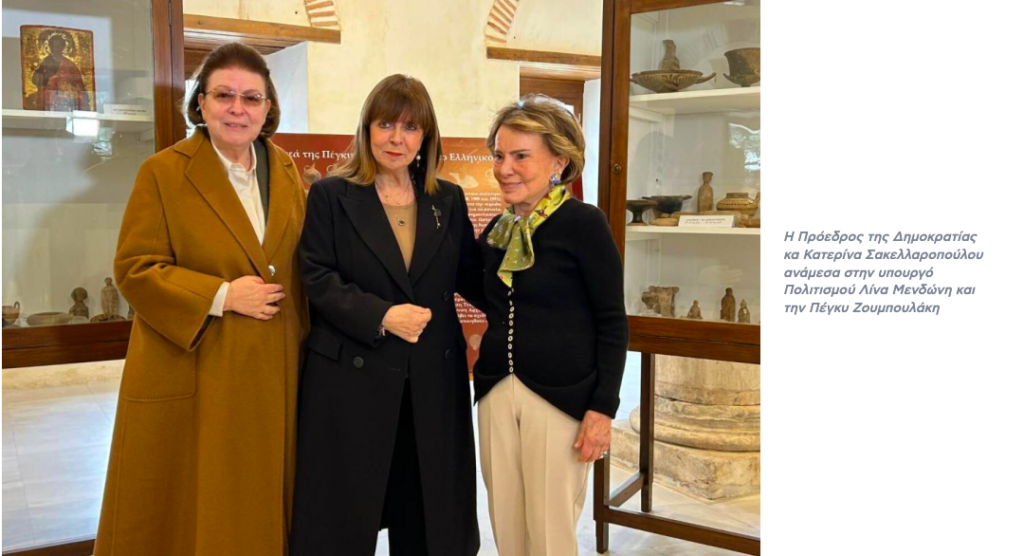More than 6,000 ancient Greek artifacts, dating from the Mycenaean period to the Classical era and originating from various regions of Greece, are included in the invaluable collection donated by Peggy Zouboulaki to the Greek state—despite her legal right to sell them.

Her collection features fragments of Mycenaean clay larnakes with figurative depictions, figurines, pseudo-mouth amphorae, cups, alabastrons, kylixes, hydriae, and pyxides with linear decorations dating from the 15th to 13th centuries BCE. It also includes Late Geometric period (8th century BCE) vases with linear designs, as well as female, male, and child figurines from the Classical period (5th-4th century BCE). Additionally, a painting of Saint Luke, linked to the region of Thebes, is among the artifacts.

A Legacy of Cultural Heritage
The artifacts originally belonged to the antiquities shop of Theodoros Zouboulakis. After his passing in 1963, his son, Anastasios Zouboulakis, managed the collection until 1982, when it was sold to Peggy Zouboulaki. Successive decisions by the Greek Ministry of Culture in 1988, 1989, and 1991 formally recognized her ownership and granted her the right to sell the items. However, rather than selling, Zouboulaki chose to donate them to the nation.
For months, a process has been underway to allocate the artifacts to archaeological authorities and museums across Greece based on their documented provenance. The Ephorate of Antiquities of Boeotia has already identified 178 artifacts as products of Boeotian workshops, using stylistic analysis.
These artifacts formed the first group officially received by the Greek state in a ceremony held today at the Fethiye Mosque in the Roman Agora of Athens. The event was attended by Greek President Katerina Sakellaropoulou and Minister of Culture Lina Mendoni, who remarked:
“Ms. Zouboulaki’s actions set an example to follow. All conscientious citizens who collect antiquities should ultimately return their collections to where they truly belong: to Greece and its people.”

Returning to Their Homeland
The process of selecting and distributing the artifacts will continue under the Ministry of Culture’s Directorate of Documentation and Protection of Cultural Property, in collaboration with the Directorate of Museums, Exhibitions, and Educational Programs. Ultimately, all items will be returned to their places of origin, where visitors from around the world will be able to admire them.
Ask me anything
Explore related questions





